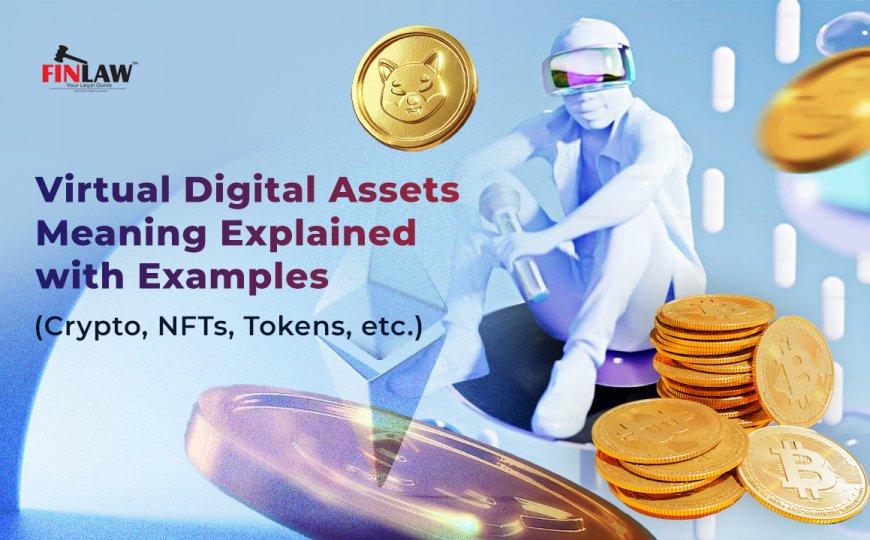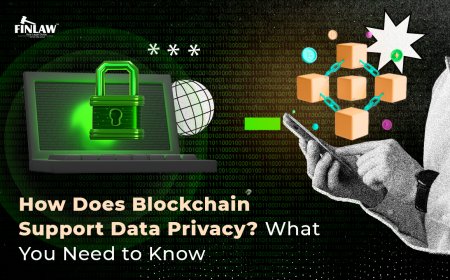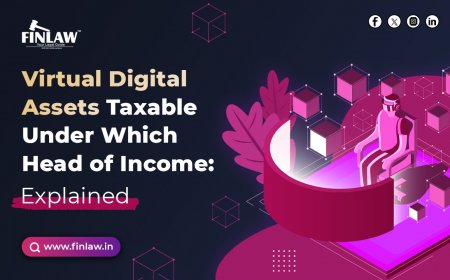Virtual Digital Assets Meaning Explained with Examples (Crypto, NFTs, Tokens, etc.)
Learn virtual digital assets meaning with examples — crypto, NFTs, tokens, stablecoins, and their role in India. Simple guide for beginners.

Introduction
In today’s digital-first economy, assets no longer need to be physical to hold value. Cryptocurrencies, NFTs, and tokens have transformed how people invest, trade, and even own property online. This is where the concept of virtual digital assets (VDAs) comes into play.
But what exactly does the term virtual digital assets mean? How are these assets defined, and what are the practical examples that help us understand them better?
This article explains the virtual digital assets meaning in simple terms, explores their types, highlights real-world examples, and examines their legal and financial significance in India.
Virtual Digital Assets Meaning — Simplified
The meaning of virtual digital assets can be understood as:
Digitally native representations of value or rights, stored and transferred electronically, often using blockchain technology.
In other words, a virtual digital asset exists purely in digital form — it cannot be touched or held physically — but it can be owned, transferred, and traded just like any other asset.
Examples include cryptocurrencies like Bitcoin, NFTs (digital art, collectibles), utility tokens used in platforms, and stablecoins.
Why Understanding Virtual Digital Assets Matters
Knowing what virtual digital assets means is crucial because it directly impacts:
-
Ownership rights – Who actually controls the asset?
-
Usage – Payment, access to a service, or investment?
-
Regulation – Taxation, securities laws, and compliance vary by asset type.
-
Risks – From fraud and scams to volatility and custody challenges.
For investors, businesses, and regulators in India, classifying assets as “virtual digital assets” also determines how they are taxed and governed.
Types of Virtual Digital Assets with Examples
1. Cryptocurrencies (Fungible Tokens)
-
Meaning: Digital currencies that are interchangeable, like traditional money.
-
Examples: Bitcoin (BTC), Ethereum (ETH), Litecoin (LTC).
-
Use Cases: Payments, investment, trading, blockchain gas fees.
2. Stablecoins
-
Meaning: Cryptocurrencies designed to remain stable in value, often pegged to fiat currencies.
-
Examples: USDT, USDC, DAI.
-
Use Cases: Cross-border remittances, on-chain settlements, avoiding volatility.
3. Utility Tokens
-
Meaning: Tokens used within a platform or application to access services or receive benefits.
-
Examples: Binance Coin (BNB), in-game tokens, decentralized finance (DeFi) platform tokens.
-
Use Cases: Paying transaction fees, unlocking special features, loyalty rewards.
4. Security Tokens
-
Meaning: Tokenized representations of ownership in real-world assets or securities.
-
Examples: Tokenized real estate shares, tokenized company equity.
-
Use Cases: Fundraising, fractional investments, regulated securities trading.
5. Non-Fungible Tokens (NFTs)
-
Meaning: Unique tokens that represent ownership of a specific digital item.
-
Examples: Digital art (Beeple’s NFT), music albums, virtual real estate.
-
Use Cases: Collectibles, gaming assets, event tickets, intellectual property.
6. Governance Tokens
-
Meaning: Tokens that give holders the right to participate in decision-making within decentralized organizations.
-
Examples: Uniswap (UNI), Aave (AAVE).
-
Use Cases: Voting on protocol upgrades, community-driven governance.
7. Other Digital Assets
-
Meaning: Digitally stored loyalty points, in-app currencies, or tokenized commodities.
-
Examples: Airline miles, gaming coins.
-
Use Cases: Customer retention, digital economies.
How Virtual Digital Assets Work
-
Creation: Assets are “minted” on a blockchain or issued by a platform.
-
Storage: Held in digital wallets controlled by private keys or exchanges.
-
Transfer: Sent from one user to another using blockchain transactions.
-
Verification: Blockchain consensus or centralized systems confirm the transfer.
Real-World Examples of Virtual Digital Assets
-
Digital Art NFT: Buying an NFT painting on Ethereum gives you verifiable ownership on the blockchain.
-
In-Game Token: Purchasing a gaming token allows access to special in-game features.
-
Stablecoin Remittance: Sending USDT to a friend abroad who exchanges it for local currency.
-
Security Token Offering: A startup issues tokenized equity shares to investors.
Legal and Regulatory View in India
The Indian government has acknowledged the rise of VDAs.
-
The Income Tax Act, 1961 was amended to define “virtual digital assets” and tax them.
-
From April 2022, income from transfer of VDAs is taxed at 30% flat rate, with 1% TDS on transactions.
-
VDAs are not legal tender (i.e., not recognized as currency like INR), but trading is allowed on registered exchanges.
This shows that in India, while VDAs are not “money,” they are recognized as taxable assets.
Risks of Virtual Digital Assets
-
High volatility: Prices of cryptocurrencies and tokens fluctuate rapidly.
-
Regulatory changes: New rules may restrict usage or increase taxes.
-
Security risks: Hacking, phishing, and wallet theft are common.
-
Frauds & scams: Rug pulls, fake NFT projects, and Ponzi schemes.
-
Custody challenges: Losing private keys means losing access forever.
Evaluating a Virtual Digital Asset Before Investing
-
Purpose: Does the token solve a real problem?
-
Technology: Is the blockchain secure and audited?
-
Liquidity: Can it be easily traded or cashed out?
-
Regulatory clarity: Is it compliant in India?
-
Community adoption: Is there active usage and developer support?
FAQs
Q1: What does virtual digital assets means?
A: It refers to digital assets like cryptocurrencies, NFTs, and tokens that exist electronically and can be owned, traded, or transferred.
Q2: Are cryptocurrencies and virtual digital assets the same?
A: No. Cryptocurrencies are one type of VDA. Other VDAs include NFTs, security tokens, and stablecoins.
Q3: How are VDAs taxed in India?
A: Profits from selling VDAs are taxed at 30%, with 1% TDS on each transaction. Losses cannot be set off against other income.
Q4: Are NFTs considered virtual digital assets?
A: Yes, NFTs are classified as VDAs under Indian law.
Q5: Are VDAs legal in India?
A: They are not banned, but they are not recognized as legal currency. Trading and holding are allowed with taxation.
Conclusion
The virtual digital assets meaning goes beyond just cryptocurrencies — it covers NFTs, tokens, stablecoins, and tokenized real-world assets.
For Indian investors and businesses, understanding what virtual digital assets means is crucial not just for adoption but also for compliance with tax and regulatory rules.
As the digital economy grows, VDAs will continue to reshape finance, art, gaming, and commerce. The key is to stay informed, cautious, and compliant.
What's Your Reaction?



















